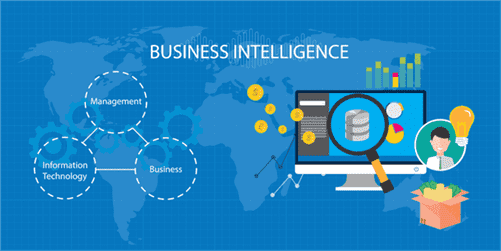However, AI-powered RPA software development can cost you a fortune, so it’s crucial to calculate expenses wisely. If you want to enter this market with your own solution, you have chosen the best time since its prospects are very bright. According to recent analyst data, the global RPA market size is set to reach $1.89 billion by the end of 2021. Such high numbers mean that many companies are investing in developing this technology, and more and more solutions from this area are entering the market. Please keep in mind that RPA is not the solution to all business problems.
In this blog, we explain what RPA is all about and when, where, and how you should use it to automate your finance and accounting processes. Cash application is a critical function in the accounts receivable process. Applying the right payments to the right accounts and invoices is a process that includes multiple ways to introduce errors.
Fast-track digital transformation with finance and accounting RPA
In a nutshell, RPA analyzes data and drives decisions based on a set of pre-defined logic parameters in order to automate tasks formerly performed by humans. According to Gartner, RPA is the fastest growing segment of the global enterprise software market. To achieve the full benefit of finance robotics, corporate controllers need to restructure their workforce to enable automated work, free from human interference. Gartner studied how a global television company restructured its team to support finance robotics.

For any business to thrive in the competitive market, it’s vital to manage and monitor the whole financial process of your business. To make this happen, businesses need to focus on preparing the profit and loss reports and that too on a regular basis. This helps businesses to know how well they are performing and getting results.
RPA Use Cases in Finance & Accounting
Next, list all the repetitive, manual & high-volume functions based on their complexity. Leverage this data to optimize customers’ credits, track orders and invoices, and process payments. With SS&C Blue Prism, you get intelligent automation that’s flexible with cloud or on-premises deployment options. You also get a scalable digital workforce using our automation framework, including the ROM and SS&C | Blue Prism® Process Intelligence (BPPI) for finding the right places to automate.
- In this piece, we’re exploring the business functions of digital workers, along with modern applications for using intelligent automation to further your business goals.
- Due to its scalability, there is no limit to the number of processes that RPA can manage.
- In smaller bank branches, customers have to stand in lines because of the small number of bank managers.
- RPA allows finance departments to achieve that so they can be an example to other businesses.
- You can see more reputable companies and media that referenced AIMultiple.
- It reduces the manual effort required for processing purchase orders while ensuring accuracy and timeliness.
For modernizing finance departments, a full consideration of all these solutions will reveal the best approach for your organization. Traditionally, automation has affected multiple workflows within the office. However, many tasks concerning finances have remained manual, either because of a lack of appropriate solutions or out of an organizational uneasiness about placing essential tasks in the hands of robots. Remember that humans still have control over robotic accounting, and the right rule configurations ensure there is someone to double-check any potential exceptions. The biggest benefit for manufacturers utilizing RPA is its ability to reduce the need for manual labor, which is an expensive commodity. Businesses can redirect their employees to other critical tasks like product development & marketing rather than back-office functions.
Impact of implementing RPA in accounting
Let’s explore some of the most common uses for RPA in these areas while considering which advantages make RPA a worthwhile investment. The list above illustrates some of the business processes that, if passed on to robots, can help companies to work more efficiently while at the same time reducing operating costs. All organizations require reporting to gain clear insights about their finances, growth, workforce, and clients. The last step of your preparation is to find a reliable software development team. If you own a large company, you probably have an IT department to come up with technical requirements and organize the development process. However, if you’re in charge of a small company, you still have options for developing RPA for finance and accounting.

Happily, these challenges are only applicable if you decide to build RPA solutions in-house. All modern RPA platforms offer solutions that solve both data extraction and system integration issues. So, let’s have a look at 10 most popular RPA use cases in finance and accounting.
How should companies automate accounting?
Companies relying on legacy HR systems can use bots to automate aggregating CVs, assessment results, and interview notes. In addition, the functionalities that the internal tools provide would be more targeted enabling more efficient usage. Companies can build RPA-enabled FAQ chatbots to answer customers’ most frequently asked questions without human intervention. Most departments, including HR, customer service, and marketing, routinely need to update their ever-changing customer/personnel data. Lateetud enhances customer engagement, enables team collaboration and productivity, and improves operational insights by leveraging AI, data, and collaborative technologies. Account receivable is similar to account payable in the matter of automation.

However, being repetitive and time-consuming, AP is the perfect candidate for RPA automation. IA provides real-time monitoring and alerts stakeholders of any financial risks or opportunities, allowing for proactive management and execution of strategies. RPA helps streamline processes and bring in more process efficiency, thereby reducing costs and improving compliance. It automatically collects information for disclosures and processes the fair value adjustments and entries.
Characteristics of early IA or RPA candidates
Not only will this boost customer satisfaction—it could lead to increased sales and revenue for your organization, too. Highly manual, repetitive tasks and disjointed application environments make for negative experiences. Improve your days payable outstanding rpa accounting use cases (DPO) by accelerating invoice processing and transforming the supplier experience with faster onboarding and more streamlined communication. Accountants and employees who usually perform everyday finance tasks are your best source of expertise.

The other disadvantage is the reps spend their time answering repetitive queries. The customer onboarding process is critical in reducing customer churn and getting new customers to start using the product. Lateetud, an award-winning company, provides a distinctive value proposition for Digital Transformation and Operational Excellence. By harnessing advanced technologies such as AI, Cloud, Process Automation, and Data, we empower enterprises to reach their objectives. If you are ready to try using RPA in your business, you can use our prioritized, comprehensive list of RPA vendors to choose the right RPA vendor for your business. There is always a need to hire a new team member to help manage the workload in case transaction volume gets to a certain point.
6. Management of inventory
IT teams can build RPA finance automation to trigger on certain events in these systems, or bots can be run at specific time when it is necessary to complete a process, Dean said. If you adopt RPA bots as your digital workforce, they will issue and email invoices automatically. By automating this task, you will get a consistent cash flow without deficiencies.